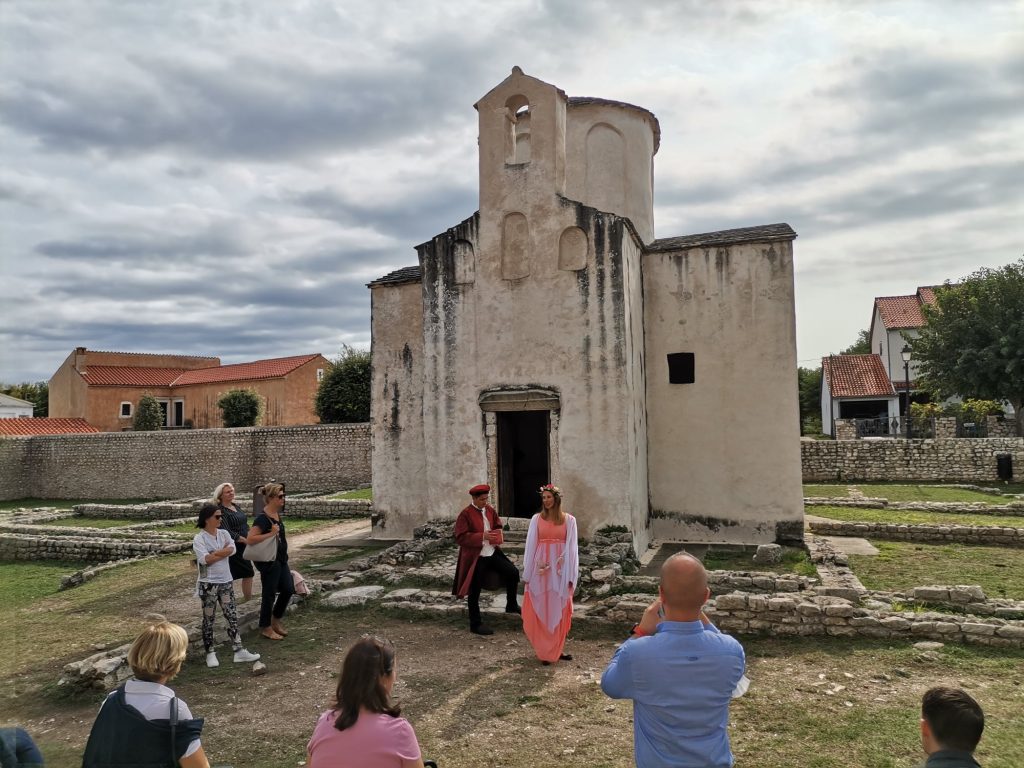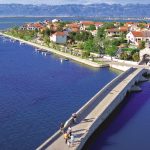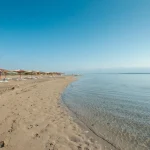According to Turističke Priče, the Living History program was organized by the City of Nin Tourist Board, and using the motto ”Get to know the history of the royal city of Nin”, two days were dedicated to this topic. The groups were led by a tourist guide dressed in the clothes worn by the author of the Mountain Petar Zoranić Ninjanin at the time when, according to known data, he worked as a court notary in Nin. He was accompanied by a tourist guide who wore the uniform of a Croatian villa, which appears in the first Croatian novel.
Costumed guides guided tourists during the season, but this time they had a very demanding task. In front of them in the group were tourist workers and students from the area of the town of Nin and beyond, who already had some prior knowledge about the first capital of the Croats. The challenge was to interpret history in a new way and supplement it with those important and little-known data.
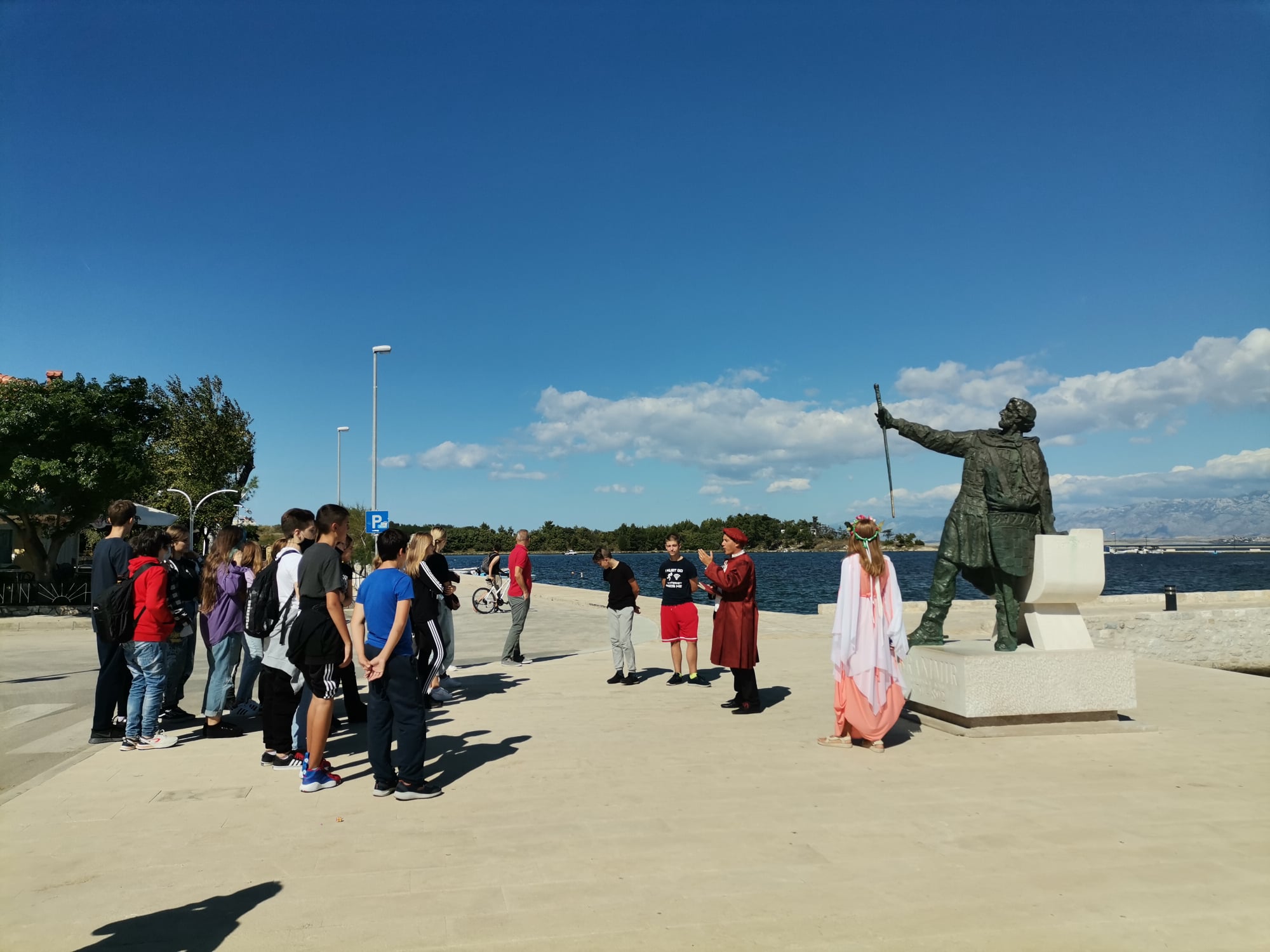
Photo: Official Facebook Page of the City of Nin Tourist Board
The Living History event was organized by the Tourist Board of the city of Nin. The goal was additional education through romantic stories of professional tourist guides. A group of 16 people had the opportunity to learn about how Prince Branimir received letters from Pope John VIII on June 7, 879 in the town of Nin, which at that time was interpreted as the first international recognition of the Croatian state. They toured the church of St. Anselm – the first cathedral in Croatia, the sacral heritage within the Parish Treasury of St. Anselma: reliquaries with the powers of Nin’s heavenly patrons, a globally famous one Judas coin, the ring of Pope Pius II, and other valuables. Inside the church, they visited the miraculous statue of Our Lady of Zečevo and got acquainted with the church tradition of Nin saints, which according to tradition is associated with apostolic times. A monument to Gregory of Nin with an interpretation of the turbulent historical period and the struggle to preserve the Glagolitic alphabet was a must-see.
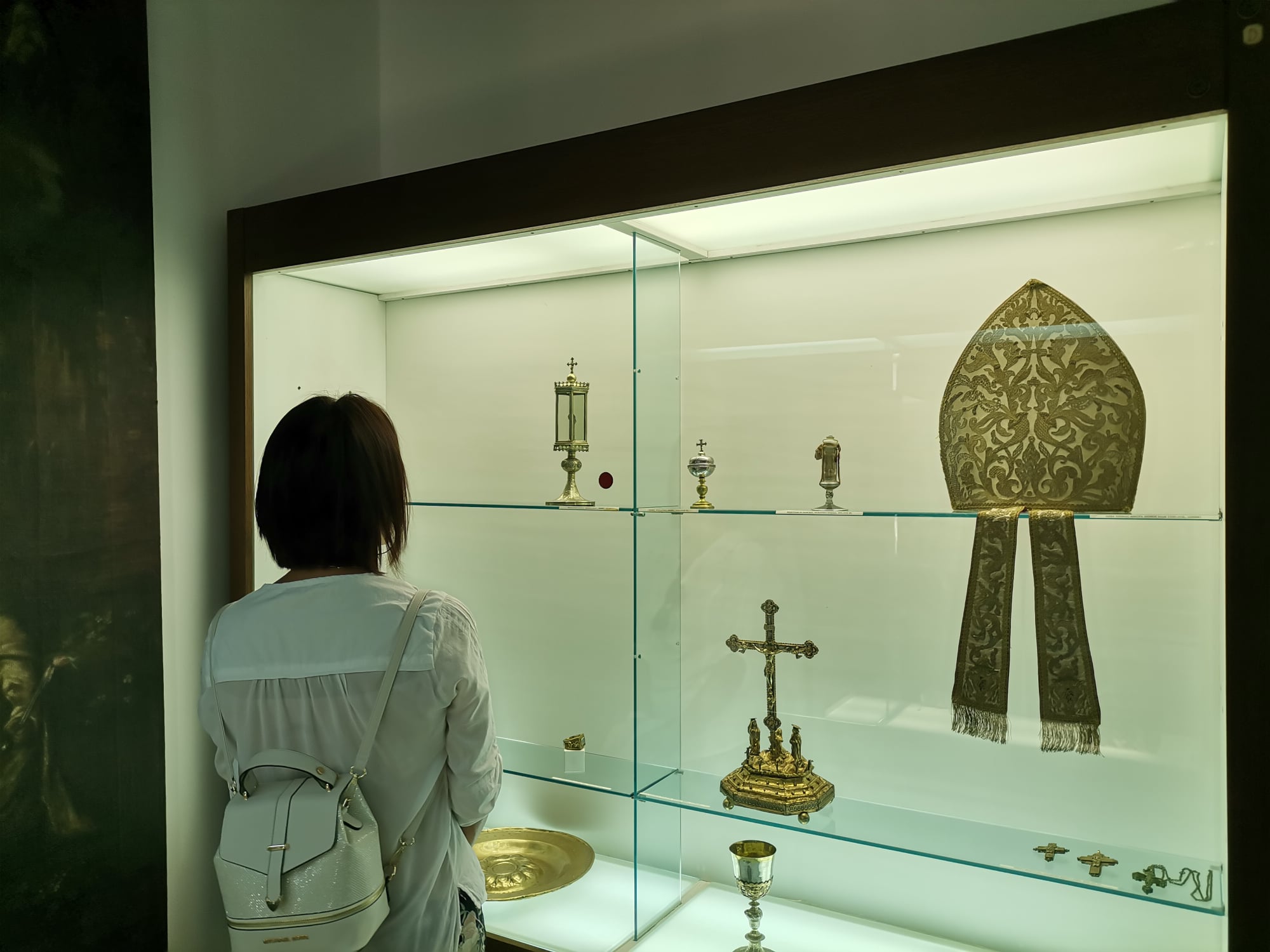
Photo: Official Facebook Page of the City of Nin Tourist Board
Next on the Living History program, members of the group toured the Museum of Nin Antiquities, which, along with materials from prehistoric, Roman, early Christian, and modern periods, preserves the originals of Condure Croatica, which are considered the most valuable exhibits because they have the level of national cultural treasure. After that, the site with the remains of Roman buildings from the first to the sixth century in the center of which proudly stands the church of St. Križa, popularly called the smallest cathedral in the world. A site with the remains of the largest Roman temple on the eastern side of the Adriatic from the first century was visited. After that, the site of the Roman domus with remarkably preserved mosaics was visited, and the group ended up touring the historic island in the memorial park dedicated to the famous Zoranić. There was an opportunity so the guides performed a new performance through which the group learned how the Bura wind got its name and other curiosities.
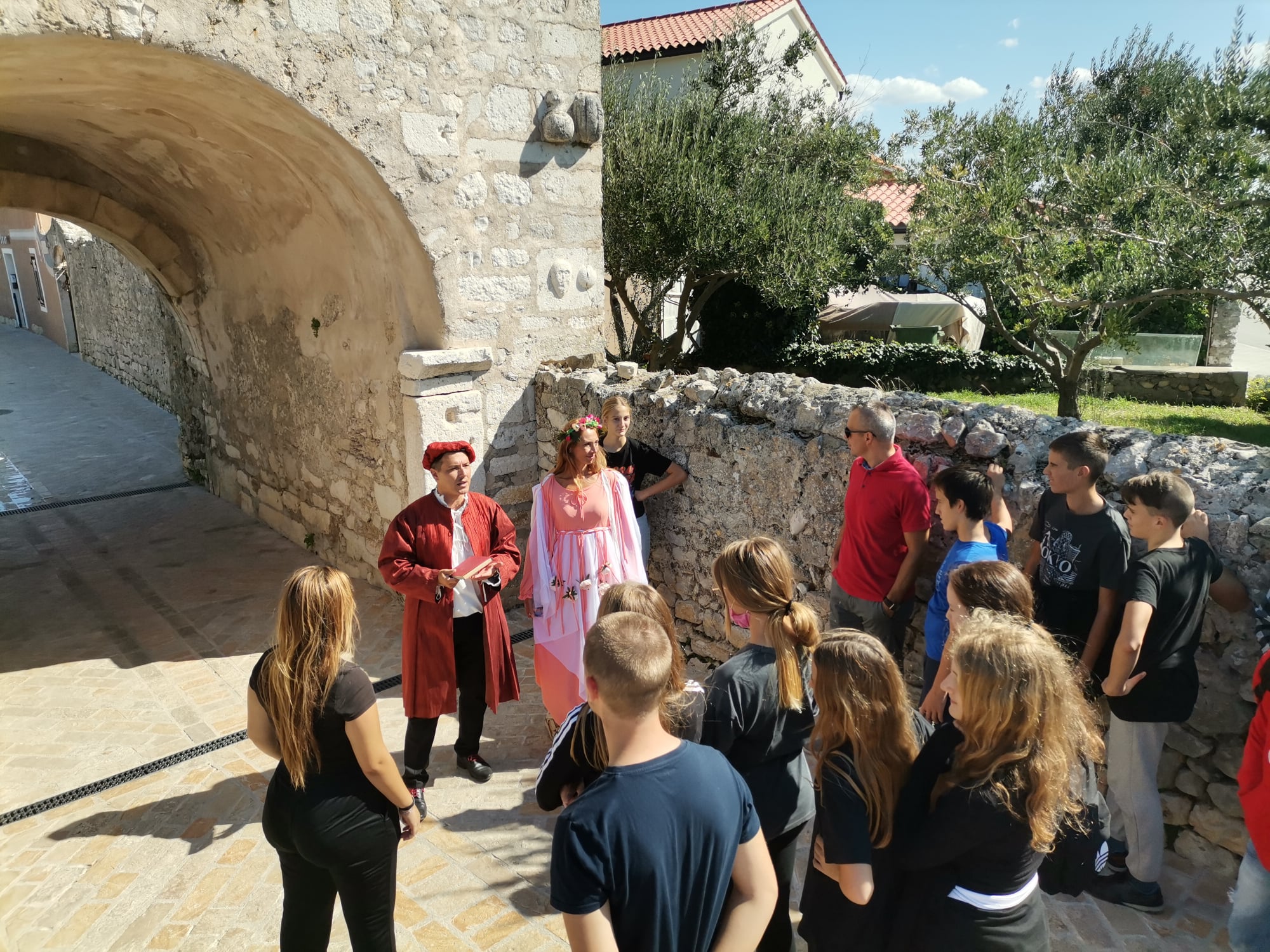
Photo: Official Facebook Page of the City of Nin Tourist Board
This concept has proven to be a very successful formula as it provides the opportunity for more fun and casual adoption of historical material. It was especially important to bring new data closer as tourism changes, and modern tourists are looking for new experiences, so this interpretation of heritage as a new tourist offer in Nin will be welcome. It is planned that visitors who will come to Nin through travel agencies will be able to participate in the so-called Living History program used as a method of interpreting historical heritage.
On the second day, a similar educational program was conducted in front of twenty-six eighth-grade students of Nin Elementary School, and the field lesson conducted by costumed guides was adapted to that age. First, the students learned through a performance that the Assyrian king Nino ordered a city to be built in Dalmatia and named after him, and that is the interpretation of the origin of the name of the city of Nino described in the Mountains by Zoranić. Among other interesting things, they went through an itinerary similar to the one that a group of adults had the previous day, but they showed great interest in the heritage of their city.
This educational program was performed for the first time, and it has already been agreed with the school management that it will be held every fall so that eighth grade students actively participate in the celebration of World Tourism Day while getting to know the history of their city more thoroughly.
To learn more about the region of Zadar and its sights, be sure to check Total Croatia’s Zadar in a Page here
For more on travel in Croatia, follow TCN’s dedicated page..

